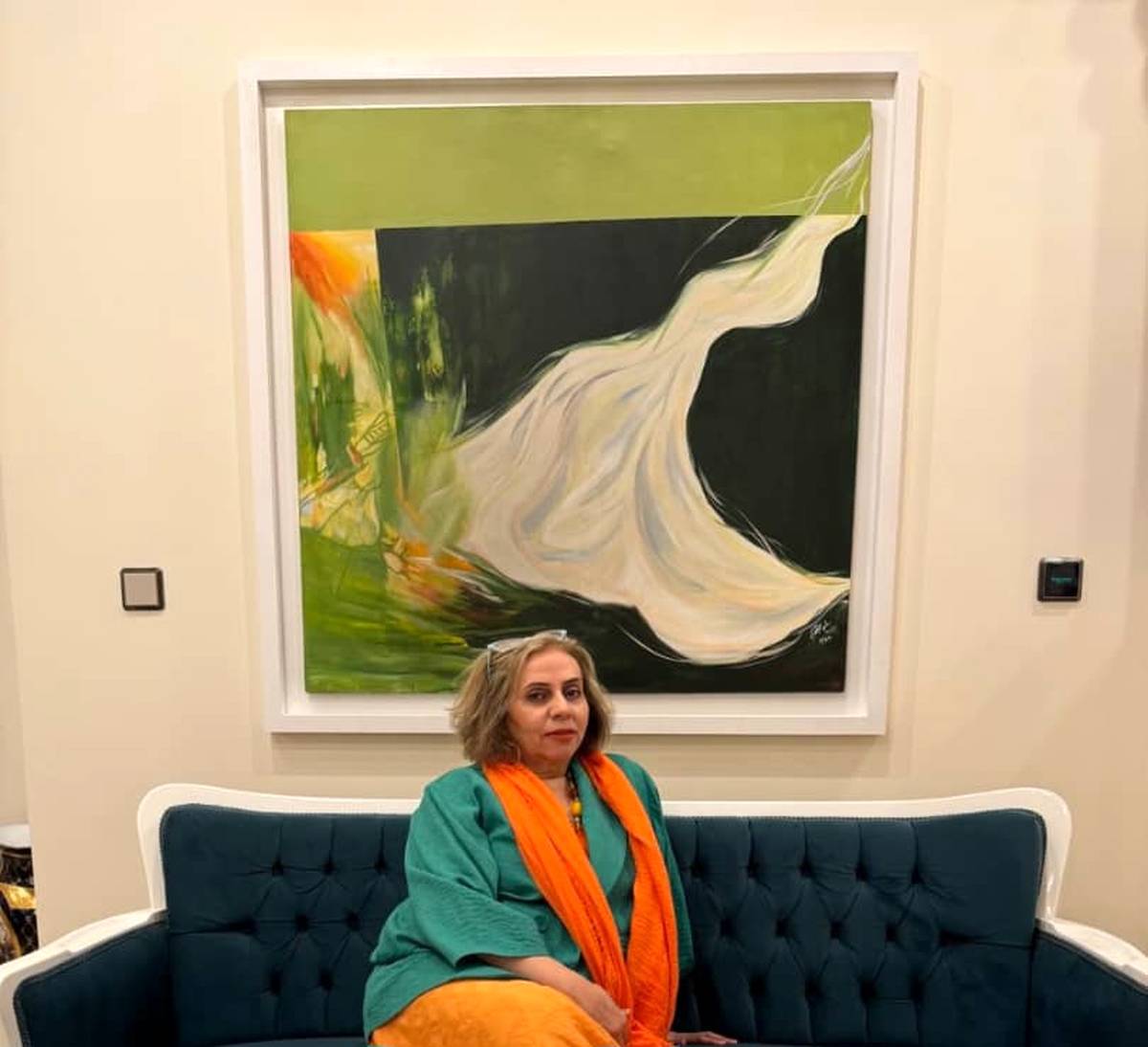
Salimeh Motamedi and Sama Dance
This work is the embodiment of the essence of Sama: a flow of light, the liberation of the soul. Through color, form, and movement, Salimeh Motamedi has translated a mystical experience into a visual language.
ArtDayMe – Salimeh Motamedi (b. 1962, Isfahan), whose works emerge at the intersection of spirituality, mysticism, and contemporary social concerns, received warm acclaim from critics, theorists, and art lovers when presented by Martex Road and the BAAT Group at the 2024 Frankfurt Art Fair, at Rachel Bianchi Archive, Milan (2025), and at ITHAQUE Gallery, Paris (2025).
Here we examine an untitled painting from her Sama Dance series, created in 2007 with acrylic on canvas (120 × 120 cm). Notably, the piece was shown that same year at Golestan Gallery in Motamedi’s solo exhibition.

At first glance, the soft white form expanding across the center of the canvas evokes the whirling robe of a Sama dervish. Curved, flowing lines conjure the circular movement of the dancer’s body—endless and recurring. The dark background and the greens and oranges around it intensify the energy of the spin, creating a spiritual space alive with inner motion.
From the perspective of its color palette, the work radiates vitality. Both the chromatic circle and the gentle, dancing rhythm reinforce this uplifting state. The hues themselves carry symbolic meaning:
• White – purity, transcendence, and the annihilation of the self in God, like the dervish surrendering in Sama.
• Green – nature, serenity, and sanctity in Iranian culture.
• Dark tones – the material world and its shadows, transcended through Sama.
• Orange and yellow – sparks of passion, the fire of love, and the inner warmth that fuels the dance.
The painting is not a literal, figurative representation but a vision of Sama’s liberating spirit. The luminous white form, like a rotating beam of light, anchors the composition, creating a space between motion and stillness—the fundamental duality of Sama: serenity arising from ecstasy, and ecstasy that finally rests in calm.
Motamedi’s choice of acrylic for the Sama Dance series is deliberate and perceptive: the medium’s swiftness and clarity provide an ideal surface for channeling Sama’s energy and rhythm. Free, spontaneous strokes on the left balance with gentle, measured movements at the center, expressing the harmony of opposites—the essence of Sama: earth and sky, matter and spirit, darkness and light.

Within this series, Salimeh Motamedi seeks not to depict the human figure but to find a visual language for mysticism and the experience of presence. Through fluid composition and symbolic colors, the work becomes a distilled image of the dervish’s motion—a visual journey toward release.
Confronted with the painting, the viewer senses not only the turning motion but also a spiritual vibration. The gaze begins to circle across the canvas, mirroring the dervish’s whirling path.
More than a picture of a dancing body, this piece from the Sama Dance collection is a revelation of liberation and Sama’s inner essence: the flow of light, the soul breaking free from darkness. Through color, form, and movement, Salimeh Motamedi has translated a mystical experience into a pictorial language.
Salimeh Motamedi on Sama Dance
In a previous video interview about the Sama Dance series, Motamedi remarked:
“What is most strongly felt in this collection is a kind of release—freedom from all the cocoons we weave around ourselves…”

The Market for Salimeh Motamedi’s Work
Over the past decade, the market for Motamedi’s work has shown remarkable growth. The steady rise in sales—from the Frankfurt Art Fair to the recent shows in Paris and Milan—bears witness to this trend.
Her mid-sized pieces were priced at USD 4,000 at the 2024 Frankfurt Art Fair, USD 4,000 at Rachel Bianchi Archive, Milan (2025), and USD 5,000 at ITHAQUE Gallery, Paris.
Motamedi’s first solo exhibition, “Voices Calling Me from Afar” (2005), was held at Banafsh Gallery, followed by a 2007 show at Golestan Gallery, one of the Middle East’s oldest art spaces. Her works have been featured in major international art events, including China Expo (2006), Peace for the World, Tehran (2007), Farrell Gallery, Paris (2017), Artem Gallery, Los Angeles (2024), as well as in prominent museums and galleries across Tehran.

LEAVE A RELPY